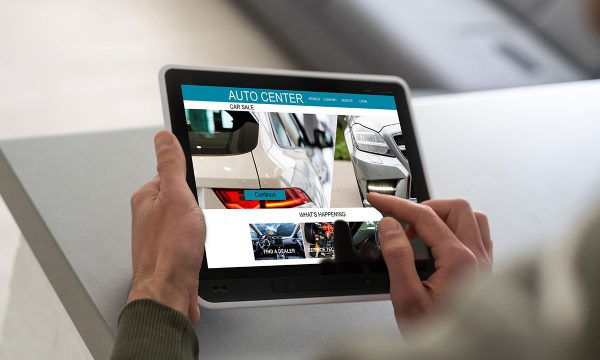WHY IT’S NOT ONLY MAJOR METRO MARKETS WHERE GREAT CONSOLIDATION OPPORTUNITIES ABOUND
 I’m often asked whether dealership consolidation really only applies to large markets. The truth is that dealership consolidation takes many forms and sizes and it occurs all across Canada.
I’m often asked whether dealership consolidation really only applies to large markets. The truth is that dealership consolidation takes many forms and sizes and it occurs all across Canada.
You don’t need to have an acquisitions department to be considered a consolidator. If your market consists of two stores and you own them both then the ownership in that market by definition is consolidated.
Often referred to as multi-franchise dealers, those that own more than one location I consider to have the potential as consolidators. Among these multi-franchise operators there are varying degrees. They can be small consolidators, mid-size ones, multi-regional or even inter-provincial consolidators.
Running more than one store is challenging. Let’s follow the growth progression of a small group over the past seven years from standalone dealer to consolidator in a small market.
Jim was a well-established, happy dealer when an opportunity cropped up in his market that was too good for him pass up. The owner of the dealership next door had suddenly decided to retire due to health reasons. He called Jim to see if he would be interested in acquiring his import dealership and entering into a long-term lease agreement to rent his facility. The dealer explained that he wanted to keep the real estate ownership within the family where the rent would act as a pension plan for his wife, if something were to happen to him.
Jim fully understood since he had recently bought a whole life insurance policy for that exact same reason. Jim was only 43 at the time but had a wife and four young children and pretty well ran the dealership himself.
NOT WHAT HE THOUGHT
Jim and his accountant poured over the statements sent to him by the dealer. They were surprised to see the low level of profitability. When Jim lined up the financials next to his own store, they saw opportunities in all departments. They did not want to let this one slip away. Jim went in with a generous and fair offer and the dealer, more concerned about getting his affairs in order, accepted the deal with very few changes. Jim paid five times the financial statement earnings for goodwill on top of the net book value of the company and entered into a five-year lease with a five-year option.
Jim’s holding company bought the shares from the dealer since it was tax advantageous to the seller. Neither Jim, nor his accountant were concerned about the lack of tax write-off for the goodwill. After a formal application to the OEM, seven weeks later Jim had himself a new store to run.
The first few days were exciting but frustrating. So many things were similar but so many were different. The pay plans for the salespeople were very different than his and he wanted everyone on the same plan at both stores. Manager bonuses were different as well and Jim encountered pushback when he tried to standardize. He lost a long-time manager over it. Jim found himself with other redundant people; two controllers for instance. The customer interface was poor.
It took him a few months to iron out the rough patches but he was getting there. The new store sales were up — double over the previous year and profits were showing strong improvement.
FIRST STEP THE HARDEST
Jim joined a performance group made up of small dealers all of whom owned between two and four stores. He quickly discovered what he’d previously not known. Over dinner, after a fairly long and strenuous day pouring over numbers he learnt about the wall — some called it the other side. They were referring to making the move to own and operate more than one store. They all tried to convince him that the big hurdle was going from one store to two stores. They assured him that going from two to three stores, by comparison was a piece of cake.
Jim thought about this. He started putting a plan together to realize the synergies of owning more than one store. Jim had no idea what synergies meant before joining the performance group but the word now formed part of every sentence he used to plan for the future.
He ran the numbers and soon believed that if he had one more store, he could afford to do some of the things he really needed to do in order to make the investment pay off. Oddly enough, with one more store, he felt he could slow down a bit and spend a bit more time with his family.
Jim sat with his accountant again, this time to scout out the local market for acquisition targets. Jim was surprised to know that his accountant represented a dealer that was thinking of moving on but had no idea that Jim would be interested. Jim’s accountant set up a meeting and again things moved fairly quickly. It took a little longer to deal with the OEM this time around since the OEM was making some lofty demands about facilities and market share targets. In the end they reached an agreement that Jim felt he could live with.
DOING MORE WITH LESS
Over the next year, Jim began to get the synergies to work for him. He aligned the banking and floor planning for all stores with the same institution. He then made a decision to utilize a single DMS platform. It would cost some money in the beginning but Jim believed the long-term benefits were there. Jim hired a human resources consultant and placed this person on retainer. The goal was to synchronize the HR function for all three stores. He also consolidated his media spend giving the impression that he was spending all kinds of money on media when in fact he was spending much less than the three stores were previously spending individually. He hired a media consultant to design a dealer group look and feel for the web. Jim was well on his way to increasing the visibility of his group and developing consistent online processes.
In a few short years, Jim had moved from being a standalone dealer to a consolidator. He operated very differently. He leveraged and empowered people much more than ever before. His weekly manager meetings were crisp and productive thanks to his DMS strategy and the hiring of a group controller.
Last year, he even took all of his managers from all the stores to the NADA Convention and Expo. When they returned, each manager had to make a 15-minute presentation, summarizing the highlights of the seminars they attended and how, armed with new information, they might employ some new ideas to run their departments.
Jim still operates in a small community with a catchment area of 25,000 people that swells to 50,000 in the summer months. There are five dealerships in his town and he owns three of them. He has a combined return of sales of over 4.0 per cent.
Being a consolidator is more a state of mind than anything. There are consolidation opportunities in just about every community in Canada. The size of the community does not really matter. It’s how you operate your multiple store group that really defines whether you’re a consolidator or not.
Some of the best opportunities today are in smaller markets. Don’t cut yourself out of the future potential. Being a big fish in a small pond is not a bad thing and is possible just about anywhere.











